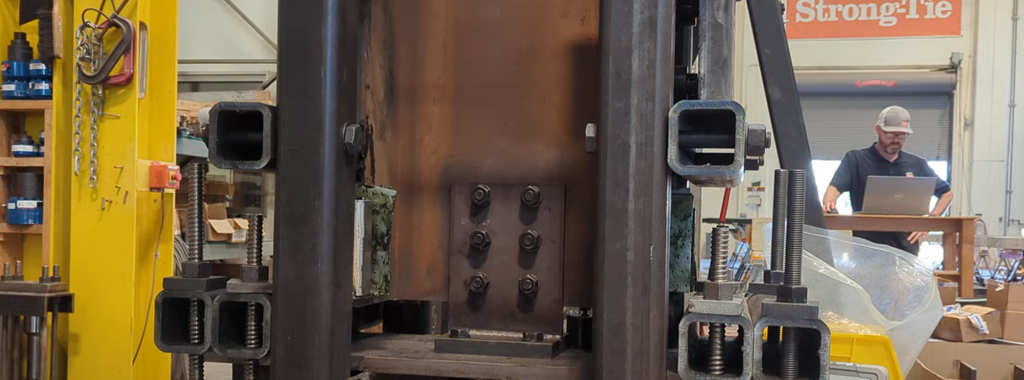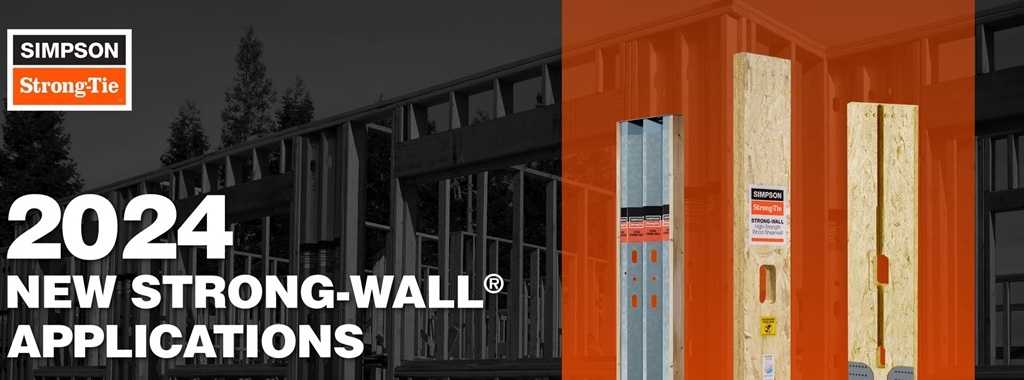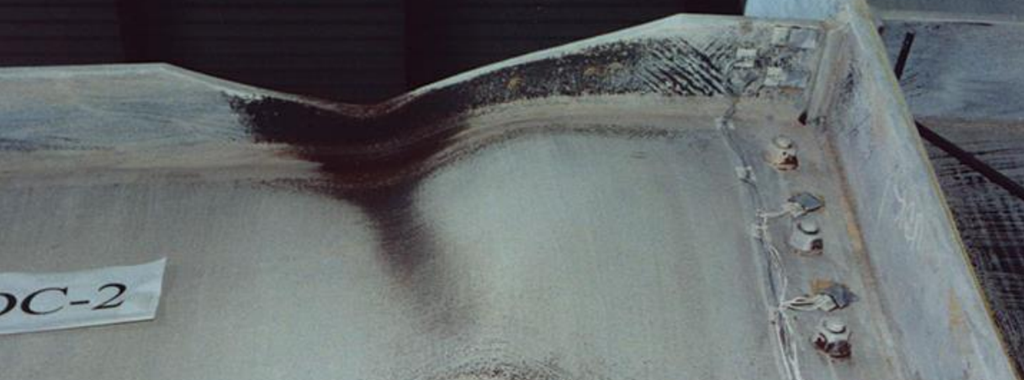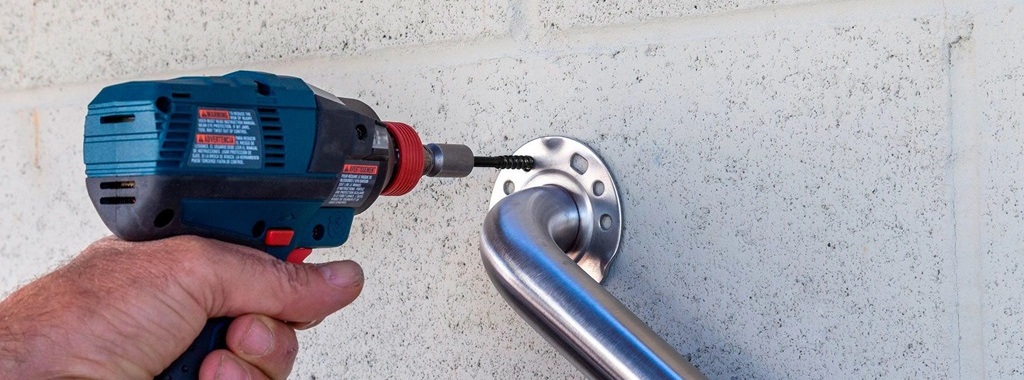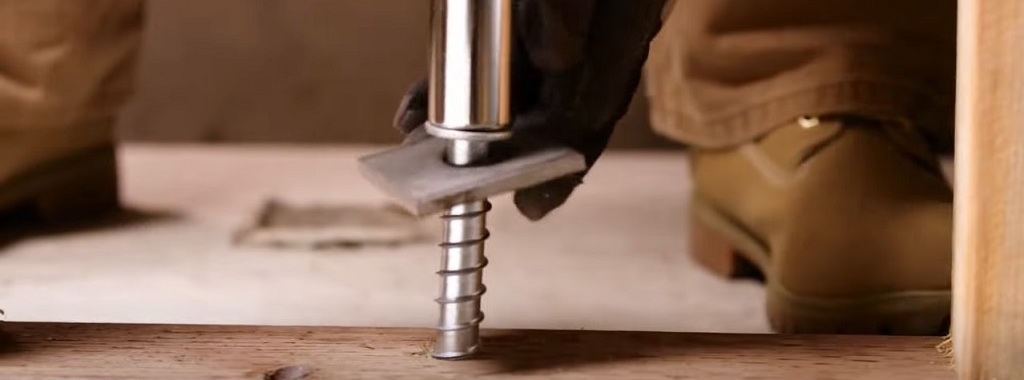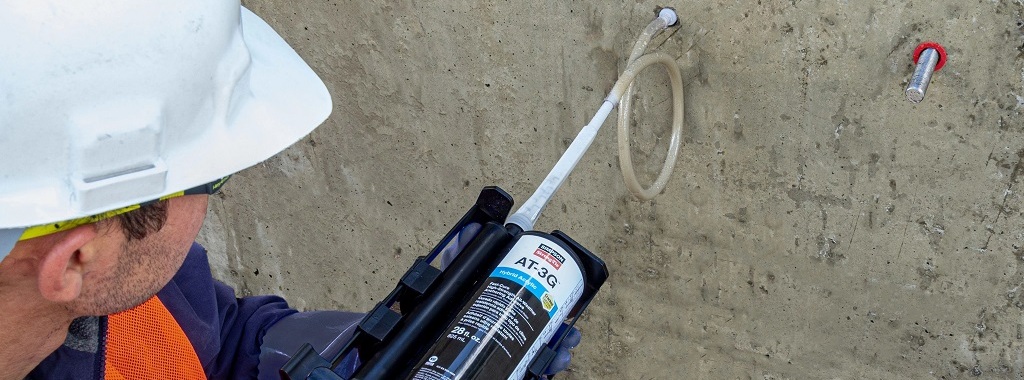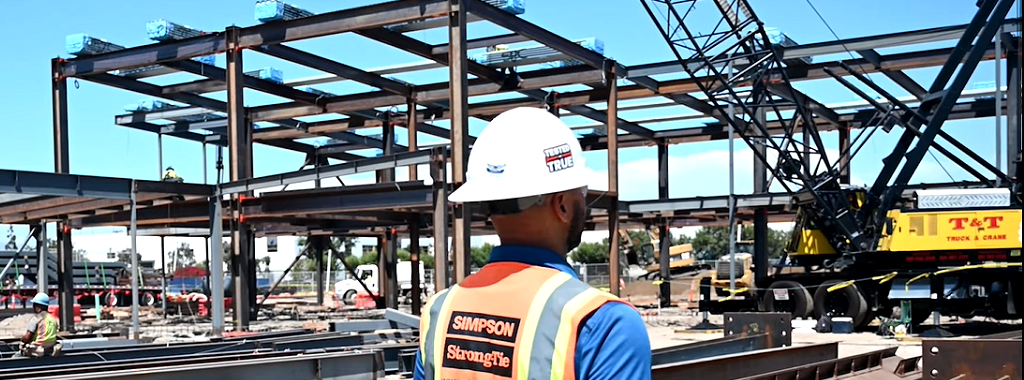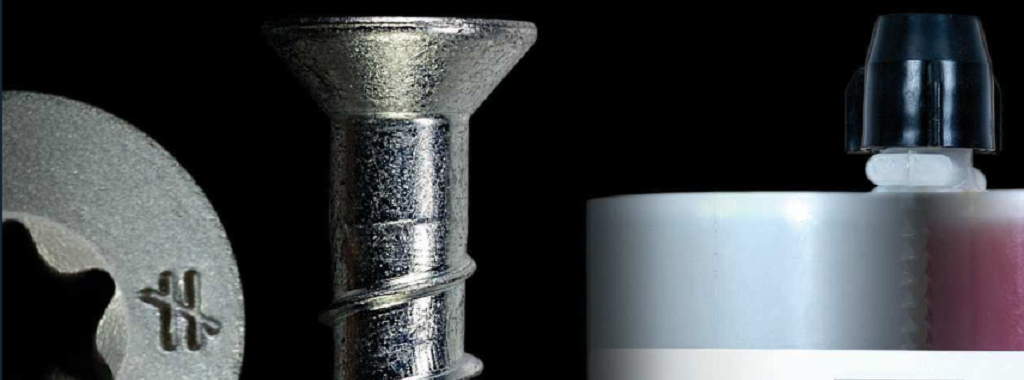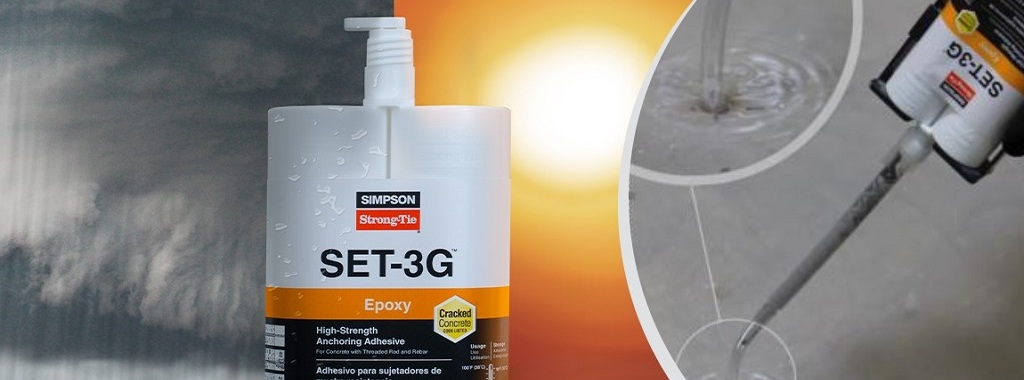Moment connections are a common lateral system in structural steel design, offering the advantage of unobstructed sight lines and clear passageways. However, they often come with significant cost and labor demands. Fully welded moment connections require extensive beam preparation, welding, and inspection, while common bolted solutions, such as flange-plated and end-plate moment connections, still involve welded components, leading to installation and fit-up challenges.
Category: Case Studies
Case Studies highlighting Simpson Strong-Tie solutions.
Strengthen Your Designs with the Latest Strong-Wall® Applications Webinar
In this post, we follow up on our October webinar, by answering some of the interesting questions raised by attendees. During the webinar, we discussed the latest Strong-Wall applications and innovative design strategies to help you optimize your structural designs. We walked through key updates, showcasing how our enhanced Strong-Wall solutions can streamline the design process while improving structural performance and compliance.
Framing the Future: The Evolution of Moment Frames
Discover insights from Simpson Strong-Tie engineer Emily Morris Frazier, P.E., as she examines the evolution of moment frame construction over the past 150 years. She traces the transition from early rivet and angle connections to the prevalent use of welded moment frames in seismic zones. Emily addresses the challenges that emerged after significant earthquakes, which spurred the development of prequalified connections to boost safety and performance. She highlights the ongoing advancements in design strategies that aim to enhance the resilience of modern structures.
Concrete Results: The Titen Turbo™ Dust Channel Delivers Dependable Installations
Discover the innovation driving our Titen Turbo concrete screw anchors. In the following post, Ken Cho, Senior Product Engineer at Simpson Strong-Tie, explains how the patented dust channel design simplifies installations, eliminates frustrations and enhances overall efficiency. Revolutionize your concrete fastening projects with our latest offering — now also available in black!
Allowable Load Tables at Your Service — A Look at the Technical Engineering Bulletin (TEB) for Anchors
One interesting part of being a field engineer for Simpson Strong-Tie is having the opportunity to see how different structural engineers may take different approaches to similar designs. We at Simpson Strong-Tie have come to appreciate these different approaches and embrace this phenomenon by providing multiple resources to aid in the completion of a design. This is very apparent when it comes to the design of post-installed anchors.
Using the Edge-Tie™ System to Create Curved Façades in Steel Construction
Curved façades can help create architecturally appealing steel structures and may even reduce the effects of wind loading. However, careful coordination is needed between engineers, contractors and glaziers when locating façade attachments. Providing adequate tolerances and avoiding field fixes can prove to be more challenging for curved façades than for conventional rectangular ones.
Introducing AT-3G™: Your high-strength cold-weather, fast-cure anchoring adhesive
In general, post–installed adhesive anchor design per ACI 318 Chapter 17 is relatively straightforward. In practice, however, post–installed anchorage can often become challenging because of fast–track project schedules, supply issues, ever-changing weather conditions, design conflicts/changes, or unexpected field conditions.
Simpson Strong-Tie® Yield-Link® Moment Connection Case Study: Rose Avenue Elementary
Structural engineers for the Rose Avenue Elementary School project in Oxnard, California, a high seismic zone, chose to switch from special moment frames requiring welded connections to the Simpson Strong-Tie Yield-Link moment connection, which features bolted connections instead of onsite welding. This case study shares the experiences of structural engineers, fabricators and other project partners utilizing this innovative solution for structural steel construction.
Common Engineering Technical Inquiries — Part I: Anchors
Over the next few months, I will be doing a short three-part series going over common technical inquiries we receive in the engineering department. There is a wealth of information available on our website and in our literature, but so much content can sometimes be difficult to navigate. It is often said that knowledge is power, so my hope is to empower you with all the technical support you need so you can complete your job quickly and efficiently.
Dry, Soaked, or Submerged Concrete — SET-3G Adhesive Allows Anchoring in Any Condition
Modern construction schedules and conditions create a demand for solutions that can perform in a wide variety of environments. In the following post, Field Engineer Chris Johnson provides a rundown of different concrete and hole conditions for adhesive anchoring, the related design factors, and proper installation instructions and approved adhesive products for submerged anchorage.



